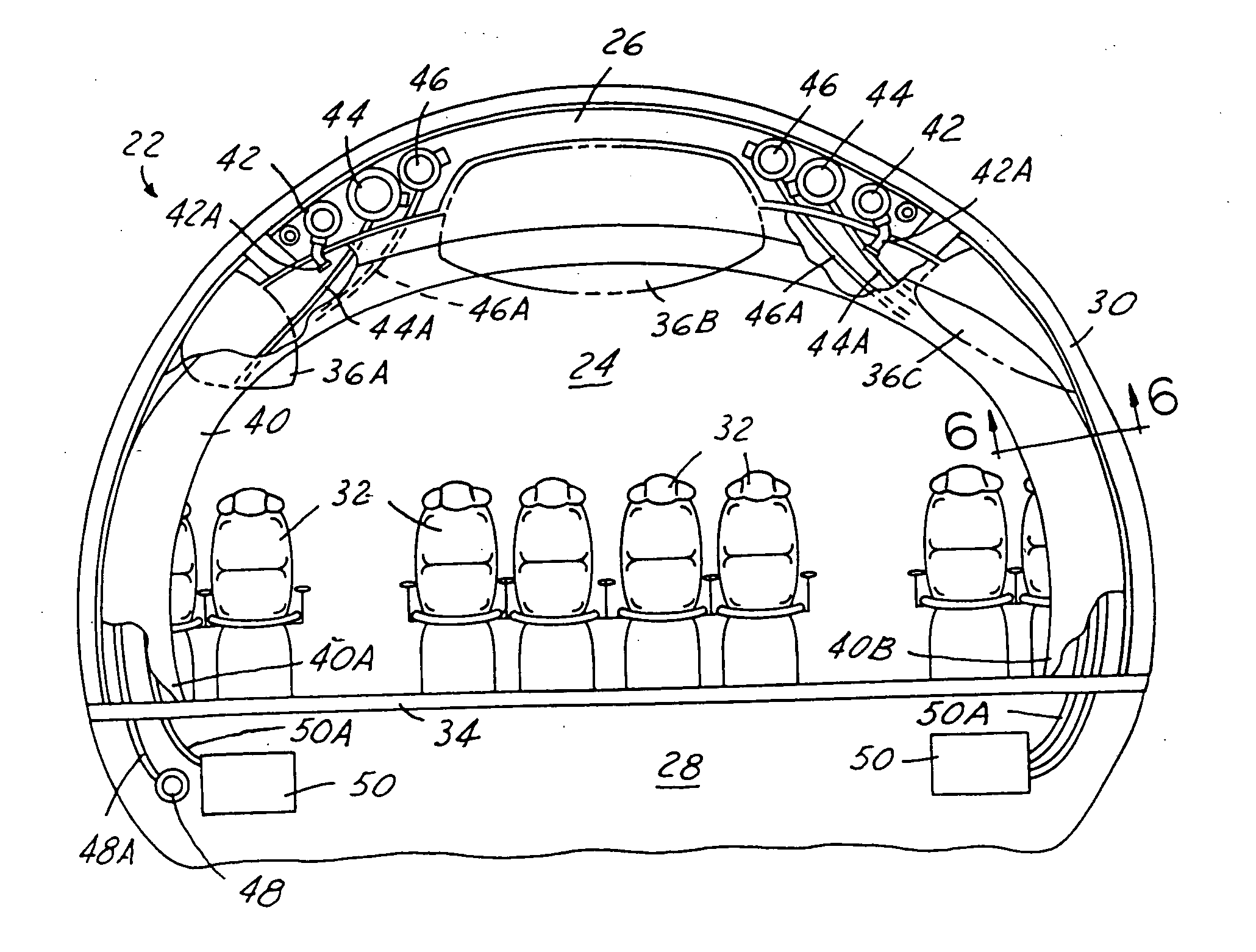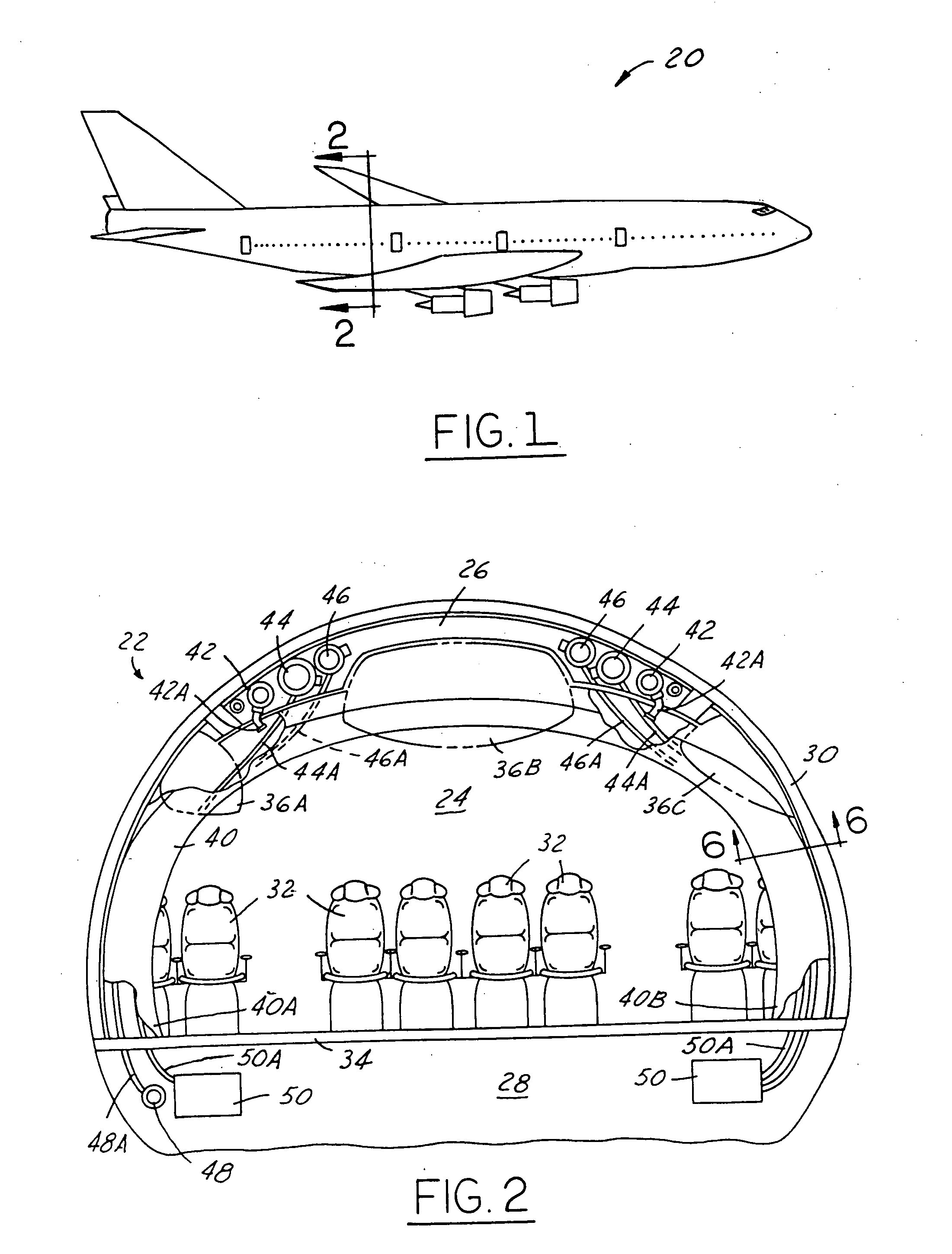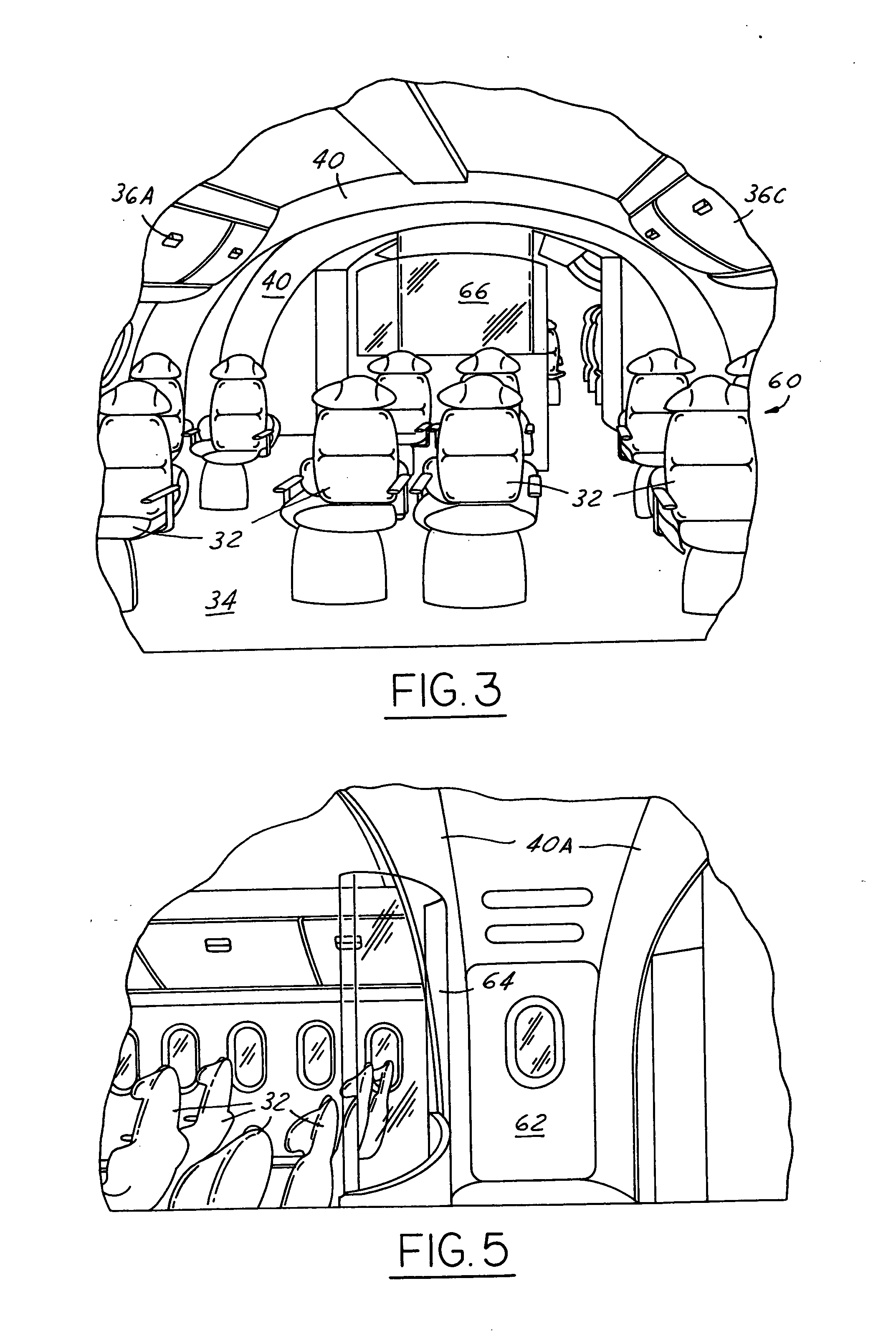Aircraft archway architecture
a technology for aircraft archways and structures, applied in the field of aircraft archways, can solve the problems of reducing affecting the service life of aircraft, so as to reduce the impact of seat configuration, reduce the variation of floor panel design, and reduce the complexity
- Summary
- Abstract
- Description
- Claims
- Application Information
AI Technical Summary
Benefits of technology
Problems solved by technology
Method used
Image
Examples
Embodiment Construction
[0020] Efficient interior configuration and modification of airplanes and other aircraft is of value to airline companies and customers by reducing the costs associated with designing and installing cabin furnishings and auxiliary and support systems. Often, these activities will result in modifications to system transport elements, such as electrical wiring, water lines, or environment control system ducts resulting in increased costs and lead time for delivery of the desired aircraft. This problem is amplified for those transport elements that must run or be passed between the airplane crown and the lower lobe or bay, since current design practices result in loss of windows in the sidewalls, or longer than desired runs to fixed monuments at the fore or aft bulkheads.
[0021] The complexity and costs associated with providing for system runs between the crown and lower bays of airplanes and other aircraft has a significant impact on interior architecture, interior flexibility, body ...
PUM
 Login to View More
Login to View More Abstract
Description
Claims
Application Information
 Login to View More
Login to View More - R&D
- Intellectual Property
- Life Sciences
- Materials
- Tech Scout
- Unparalleled Data Quality
- Higher Quality Content
- 60% Fewer Hallucinations
Browse by: Latest US Patents, China's latest patents, Technical Efficacy Thesaurus, Application Domain, Technology Topic, Popular Technical Reports.
© 2025 PatSnap. All rights reserved.Legal|Privacy policy|Modern Slavery Act Transparency Statement|Sitemap|About US| Contact US: help@patsnap.com



